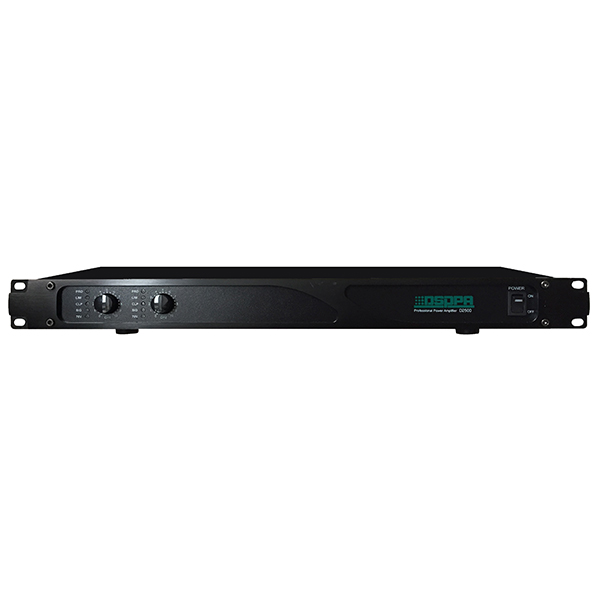

Leave a message



When the small digital amplifier technology is used to produce the whole machine, the volume control scheme will become the dividing line of the machine class. The simple scheme, like the traditional analog amplifier, attenuates the input amplitude of the analog signal by the potentiometer to achieve the sound attenuation. In this way, the quantized bit rate of the digital signal is not fully utilized. When the volume is low, the signal-to-noise ratio decreases and the dynamic range decreases. A better solution is to reduce the volume by adjusting the power supply voltage to change the output power by changing the pulse voltage amplitude added to the low pass filter. In this way, the quantization bit rate can still be fully utilized. As the voltage drops, the quantization noise decreases, so the volume decreases, but the signal-to-noise ratio and dynamic range can remain unchanged. Because the power of the power amplifier is large, the change of power voltage cannot be realized by means of resistance attenuation or partial voltage. TACT's solution is to change the duty ratio to change the final output voltage during the dc-dc inverter of a digital voltage-stabilizing power supply. At present, such schemes can only be used in the whole machine where discrete components are used for power output. Integrated digital work setup lC still uses attenuation simulation input as the main method to adjust the volume.
 【DSPPA Demo】PAVA8000 EN54 Voice Evacuation SystemNovember 12, 2020Abstract: DSPPA PAVA8000 EN54 Voice Evacuation SystemToday, we are gonna show you a demo about our PAVA8000 EN54 Voice Evacuation System.PAVA8000EN54 Voice Evacuation System can not only support manua...view
【DSPPA Demo】PAVA8000 EN54 Voice Evacuation SystemNovember 12, 2020Abstract: DSPPA PAVA8000 EN54 Voice Evacuation SystemToday, we are gonna show you a demo about our PAVA8000 EN54 Voice Evacuation System.PAVA8000EN54 Voice Evacuation System can not only support manua...view The National Standard Approval Meeting held in BeijingJuly 19, 2019The National Standard Approval Meeting held in BeijingThe approval meeting of the National StandardTechnical standard of public address system engineeringis held in Beijing on July 16, 2019. Xue Chang...view
The National Standard Approval Meeting held in BeijingJuly 19, 2019The National Standard Approval Meeting held in BeijingThe approval meeting of the National StandardTechnical standard of public address system engineeringis held in Beijing on July 16, 2019. Xue Chang...view


